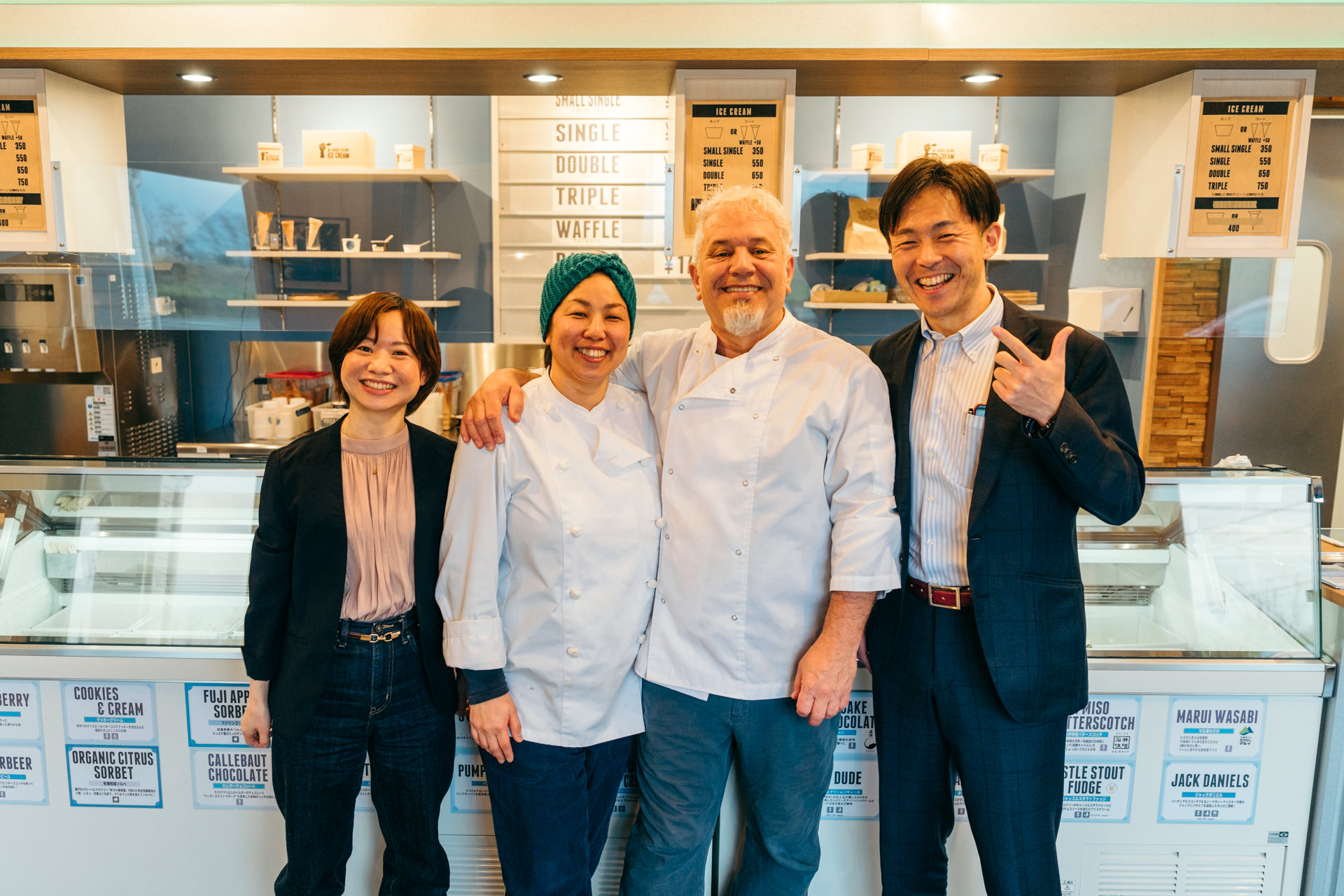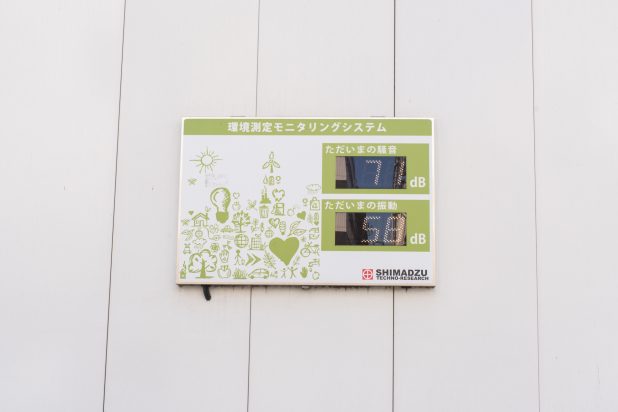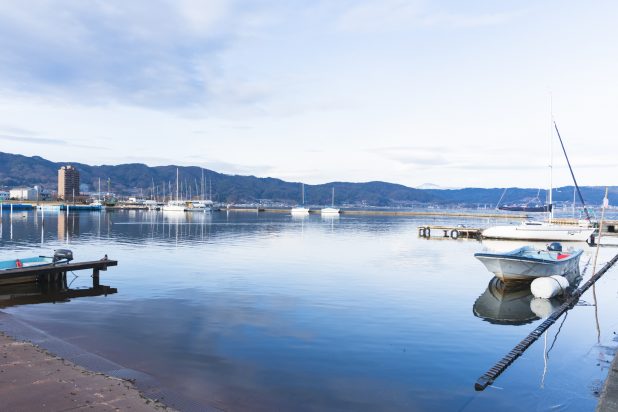Note: Names of organizations, offices, departments, etc. in the article are as of when the article was first published.
What is your favorite ice cream?
Is it the one that you always pick up at the supermarket or convenience store?
Is it the soft serve you find when taking a trip to somewhere new?
Or is it the one you eat under the blue skies on a clear day at the beach?
Regardless of the place or brand, there are times when just eating ice cream is enough to soothe you and bring happiness!
For anyone visiting Nagano Prefecture, we highly recommend stopping by MDI (Mount Desert Island) Ice Cream.
It may well change the ranking of your favorites.
MDI ICE CREAM (MDI) was established in Maine, U.S.A. in 2005, and now has three stores in the U.S. and two in Japan.
With the motto “making the ice cream we ourselves want to eat,” this brand creates unique ice cream flavors made from scratch with only real ingredients.
The first shop in Japan opened in the fall of 2019 on Nawate-dori in Matsumoto City, Nagano, and since then it has been wooing customers every day with their unique artisanal ice cream.
In April 2022, they opened their second shop and enlarged production facility in the Azumino area of Nagano, which is well known for its wasabi farms and beautiful views of the Northern Alps of Japan.
We visited this production facility and shop to see how they are using T&D products.
| Date | March 2023 |
|---|---|
| Place | MDI ICE CREAM AZUMINO |
| Models in Use | RTR500BW, RTR502BL, RTR-602L |
| Purpose | Overall temperature management in the production and storage of ice cream |
Q: First of all, what makes MDI ice cream special?
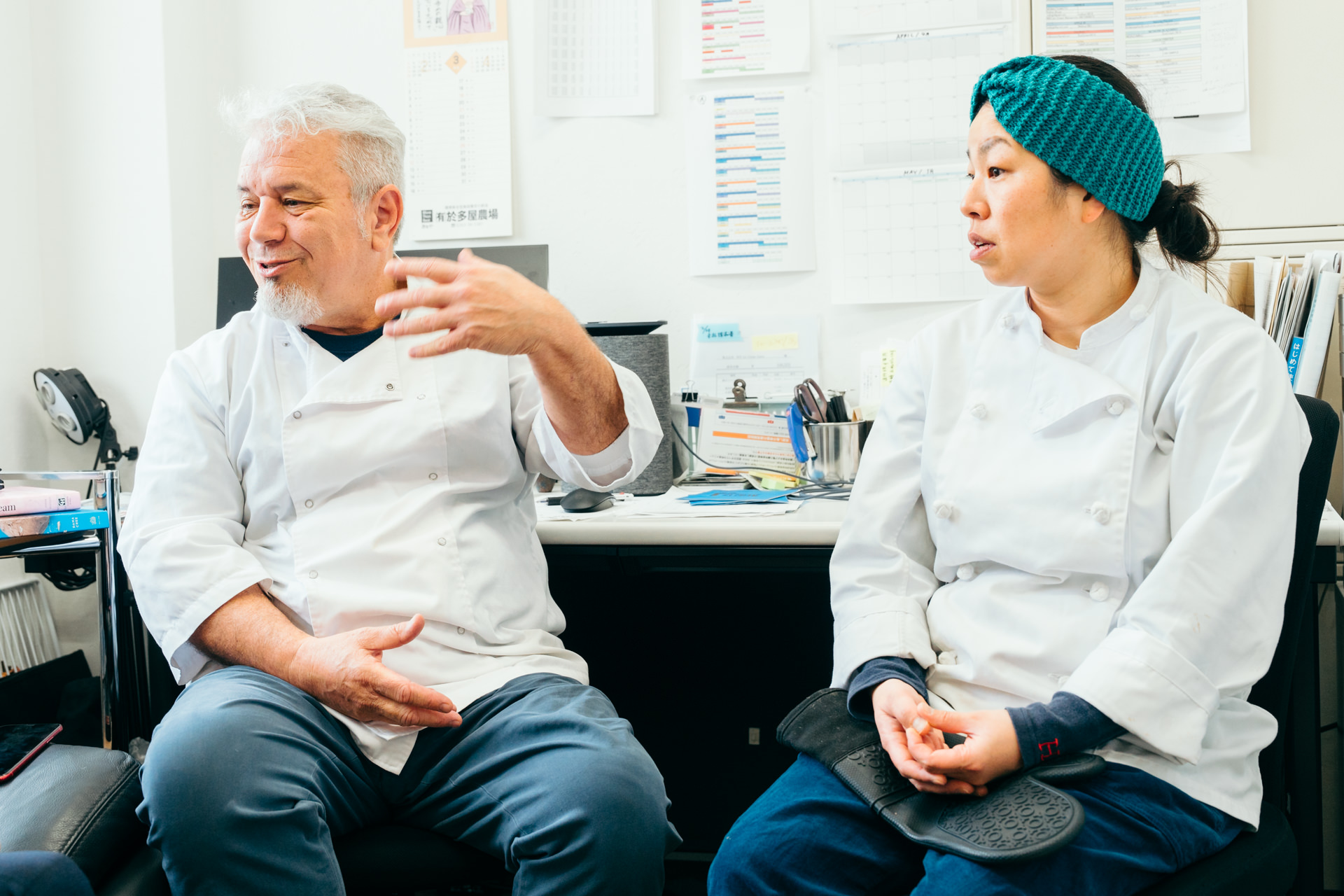
Kelton: Well, first of all, it is “American” style ice cream and has a high butter fat content of 15-16%.
Kelton Boyer, MDI’s general manager in Japan, has been in Japan for more than 30 years and is an American who understands Japanese sensibilities better than many Japanese. He speaks Japanese perfectly and since he is a cheerful and very frank talker, I will venture to write in a tone that reflects that.
Kelton: A lot of ice cream that is sold in Japan and that Japanese are used to eating is “French” style that uses eggs to stabilize or emulsify the fat in the ice cream to make it creamy. Our base ice cream mix doesn’t use any eggs. It is also sometimes called “Philadelphia” style. It’s a rich full flavored base that is clean on the palate.
It is also expensive to make here in Japan because we use so much cream: about 60 liters everyday…and they told us the price of cream is going up again from April! The rising prices are making it so hard for us!
Also, we make almost everything we put into the ice cream by hand from scratch. All sauces and purees are made from in season fruits and we peel and cut them by hand, add sugars and boil down for use later.
It is very time consuming and labor intensive.
Sometimes the fresh fruits are so good when we taste them that we all start eating them and before you know it we don’t have much fruit left to make puree with! (Laughter)
Another example is chocolate mint…in shops it is always a green color! That isn’t natural! Our ice creams are all natural colors.
Even our vanilla ice cream is made from real vanilla beans, which are cut open and scraped by hand.
Real vanilla beans are precious and quite expensive, so most commercial products use vanilla flavoring as a substitute.
However, the aroma and flavor from real vanilla beans is so different and real!
So even though the raw materials we use are so expensive that it’s hard to make a profit, we still want to make ice cream that is full of real ingredients.
Q: Why did you decide to use T&D data loggers?

Kelton: Mostly because we had to use something to manage temperatures according to HACCP regulations.
When dealing with dairy products, we need especially strict temperature control, so the system we use automatically records temperature data and sends it to the cloud (T&D WebStorage Service).
I like the fact that the temperature data stored in the cloud can be easily viewed using a smartphone or PC.
It’s reliable, versatile, and can be used in many different processes. When making ice cream, we use a pasteurizer to pasteurize the base mix, and the loggers automatically record the temperature throughout the pasteurization process. If a problem should occur, we can immediately retrieve the records and check them.
In producing ice cream it is really important to follow and know the temperature during the pasteurization process.
* Pasteurizer (heating and sterilizing machine for raw materials)
A device used to make ice cream base mix by sterilizing ingredients while mixing them together.
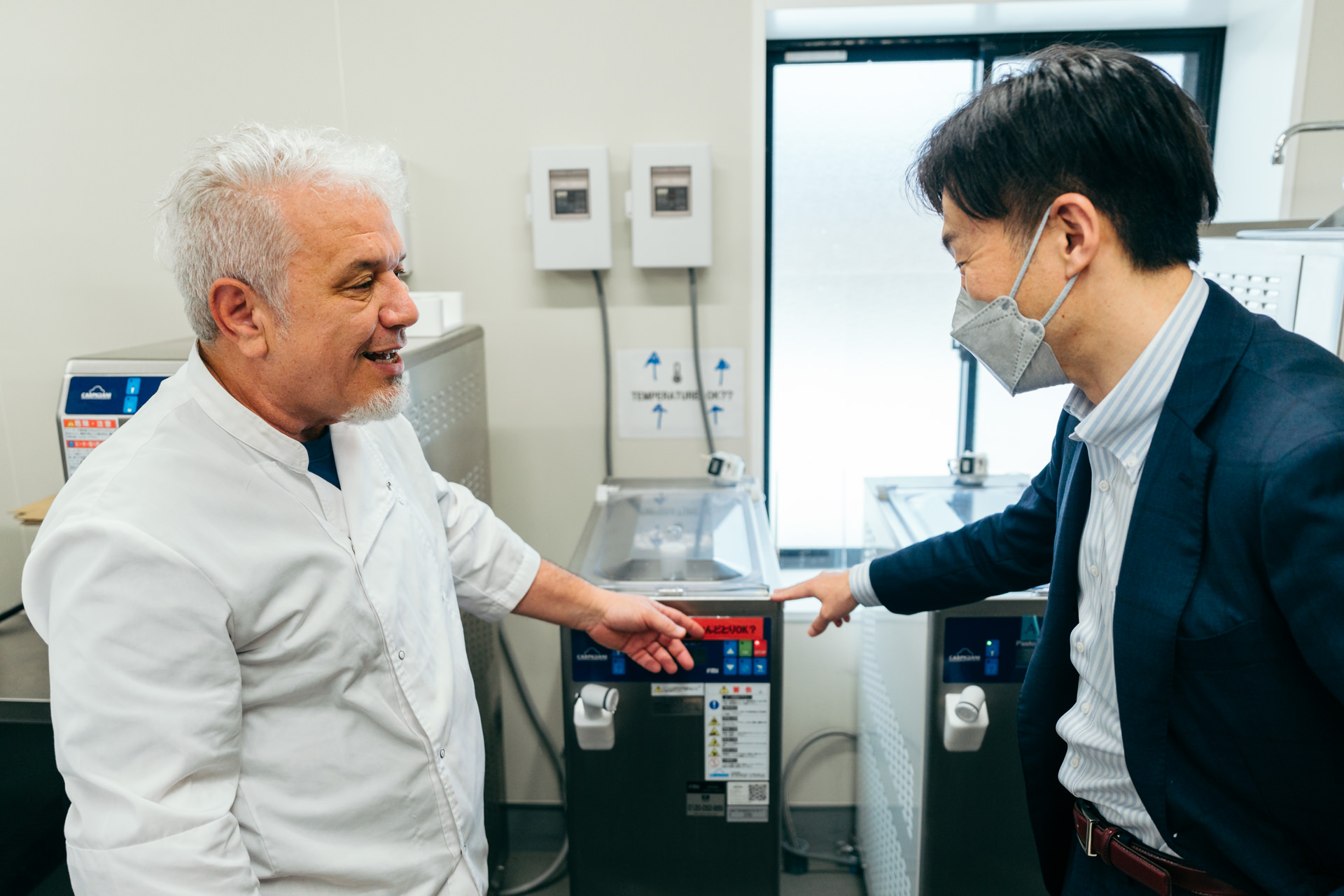
Before we used high-temperature pasteurized milk for our base mix, but we switched to low-temperature pasteurized milk produced by a local dairy.
It has a great flavor when drunk on its own, and makes an absolutely delicious ice cream.
I think the taste of ice cream has changed since we switched to this low-temperature pasteurized milk, and it tastes much better!
Since we are using low-temp pasteurized milk, the pasteurization process for ice cream base mix must also be done at low-temperature or it will lose its meaning.
If pasteurization is done at high temperature, it only takes a few seconds at 130℃, but in the case of low-temp pasteurization, the temperature must be maintained at 63 to 68℃ for at least 30 minutes, so temperature control is even more important.
Even if you use low-temp pasteurized milk with a good flavor, it will be meaningless if it is pasteurized at a high temperature when making the mix.
After the pasteurization process, we usually let the ice cream rest overnight in the pasteurizer.
At this point, the temperature must be kept below 4℃.
――You let the ice cream rest?
Kelton: Letting the ice cream rest makes it taste better.
The ingredients blend with each other, and the depth of flavor increases.
But the pasteurizer is different from a refrigerator, so we always worry a bit about the temperature while it’s resting in the pasteurizer.
Since we leave the ice cream unattended at night, we need to make sure that a logger and sensor are set up and working!
――There are indeed a lot of stickers that say “Ondotori-OK?” (LOL)
* Ondotori is a Japanese brand name for T&D products.
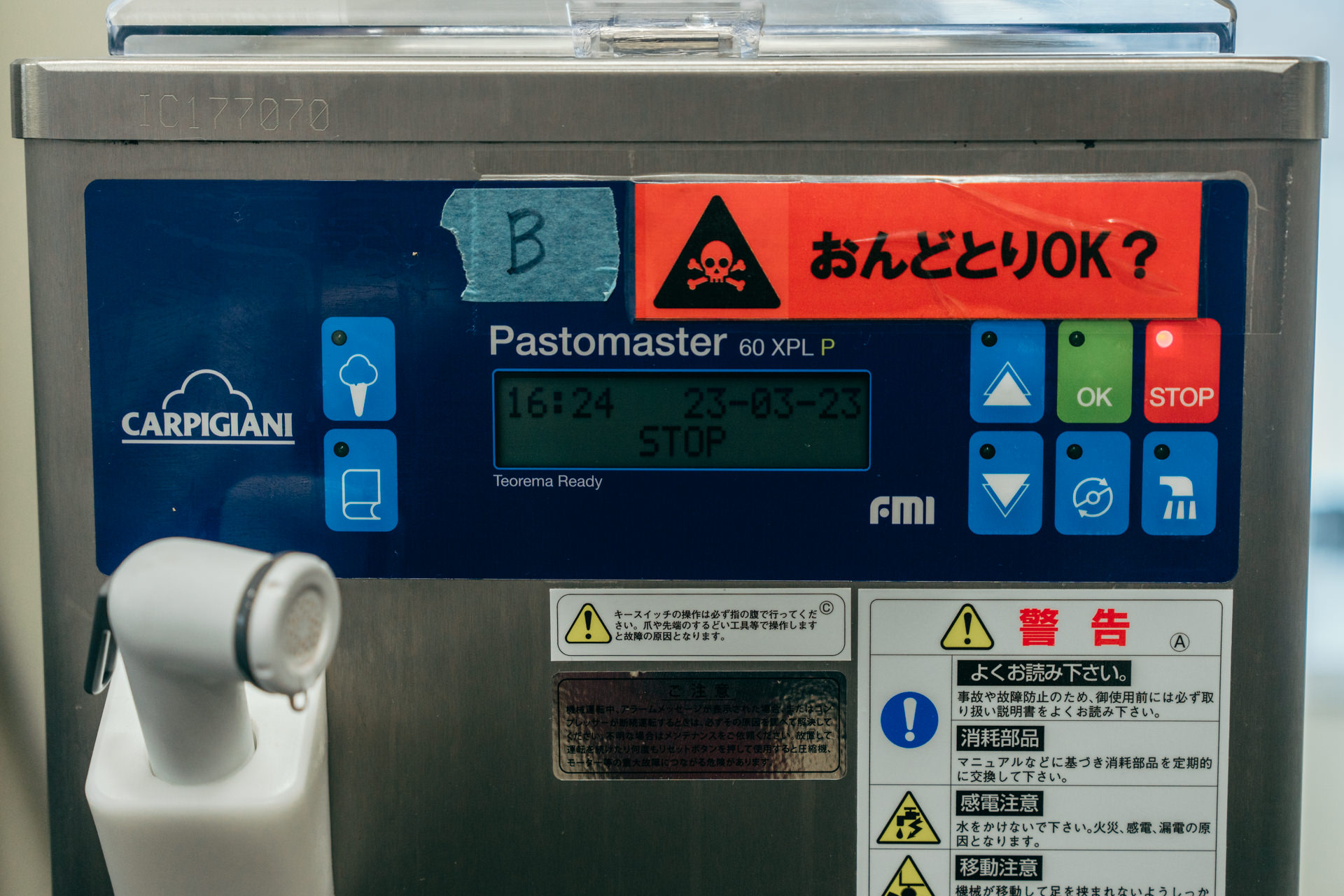
Kelton: One of the most important keys to flavor and consistency for ice cream is temperature. We don’t want fluctuation when storing our ice cream as it will cause separation and both texture and flavor will change for the worse.
All of our ice cream in its various forms make up our assets, so its great that I can get warning e-mails when there is some kind of temperature emergency.
A while back a staff member didn’t close the walk-in freezer door completely and the warning mail saved us from a great loss. I was pretty shocked when I got the email on my cell phone with the title “Yabai-yo, Yabai-yo”. (Yabai in English is like OMG OMG!!)
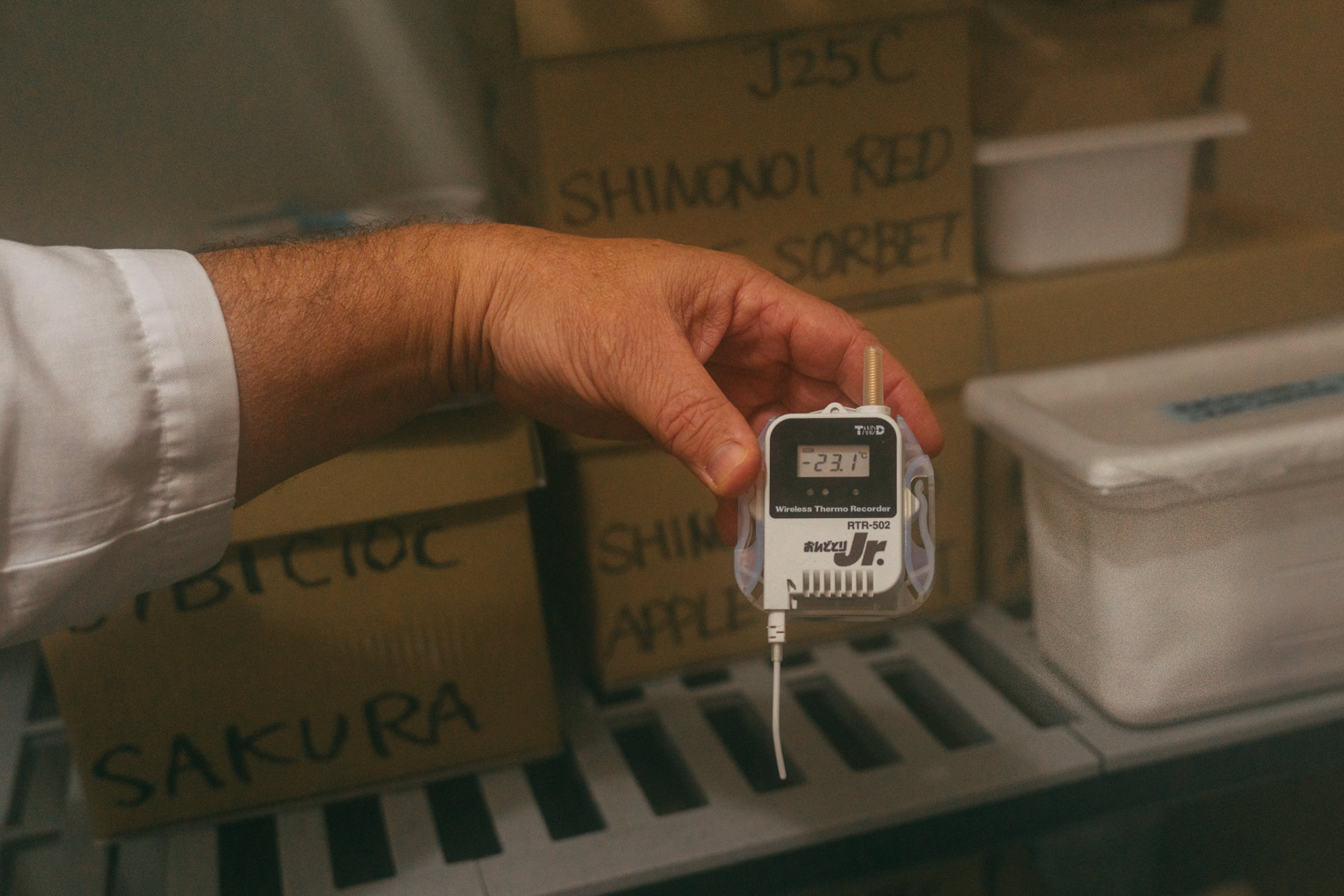
――The idea to set the e-mail title as “Yabai-yo, Yabai-yo” was mine!
Kelton: The Azumino store has three licenses from the health department: ice cream production, confectionery production, and restaurant. But especially for ice cream production, the public health department is very strict.
When we applied for the operating license for ice cream production, the health inspector came to do an inspection.
When I explained that I was using a T&D logger system to manage ice cream production, the health inspector said, “If you are using their products then there is no problem”.
――You are also using one of our RTR-602 models for food core temperature, aren’t you?
Ms. Kobayashi: We mostly use the RTR-602 when boiling down ingredients and for making different sauces.
――Ms. Kobayashi is the head of ice cream production at the Azumino facility.
Ms. Kobayashi: For example, when we make caramel sauce, we boil the ingredients in a pot, but we must not stir the mix at this time.
If you stir it, a chemical reaction will occur, but on the other hand, the ingredients might scorch. You just have to be patient. It is always a great dilemma.
Even if you want to taste it, you might burn your mouth because it is still boiling hot (laughs).
I use the RTR-602 to check the temperature just before it burns, so I can remove it from the heat.
Q: There are many creative flavors that you don’t see anywhere else. Where do these ideas come from?
Kelton: I’m really interested in what happens when you take something familiar in Japan and use it to make ice cream.
I keep thinking about that in my head.
Almost anything can be made into ice cream. In America, there is even crab ice cream, not at MDI but it does exist.
I’ve always loved cooking since I was a kid, and often think about putting this and that together; maybe it would be delicious!
Q: Is there anything that you tried that didn’t work?
Kelton: Red bell pepper was a total failure. I grilled them to bring out their full sweetness before making it into ice cream, but it was a huge failure! I had to throw it out!
The first customers to the Azumino store were a local couple who grow cucumbers. I asked them if they would share some of their cucumbers with us so that we could try using them to make ice cream.
When I asked them to share some of their cucumbers with us, they looked at me with great suspicion (laughter).
But when we tried it, it turned out to be delicious, and the cucumber-lime sorbet is now a summer staple at our shop.
Q: What are your future plans and ambitions, if any?
Kelton: In the near future, we hope to expand sales through wholesaling and through our online shop.
We’ve also installed a logger in the freezer compartment of our refrigerated truck, so now we can control the temperature when we go out to deliver our products to hotels, restaurants, etc…
I really don’t like cold weather and winter in Nagano, so I hope to open shops in Okinawa and Vietnam. I could go work in those shops in winter.
It would be nice to have a small shop, so that when we sell out, we can call it a day!
――Sounds good! If you really do that, please let me visit your shop in winter, so I can cover the event (lol).
Listening to Kelton talk about pursuing originality but also making ice cream with care and safety in mind, I felt that what he is doing is truly a fusion of the American pioneering spirit and the Japanese spirit of being particular to details.
With original flavors like Ishii Miso Butterscotch, Marui Wasabi, Masumi Sake Lees Chocolate, Cucumber Lime Sorbet, Cinnamon Cardamon, Blueberry Basil Sorbet, Vietnamese Coffee, Coriander Raspberry Crumble, which would you choose?
MDI ICE CREAM
MDI ICE CREAM Website
